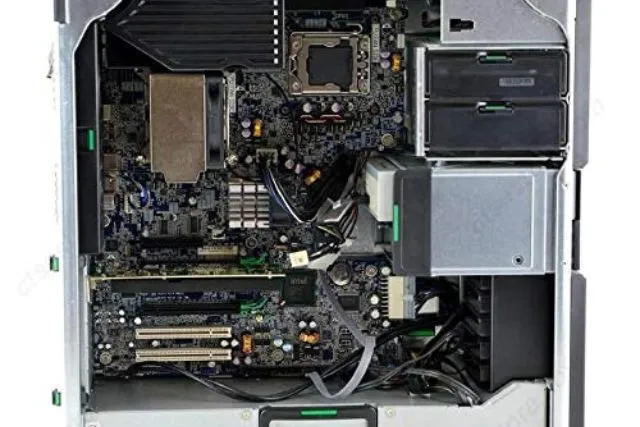The HP Z600 Workstation stands as a landmark machine in the history of professional computing. Engineered not for portability but for demanding tasks like complex rendering, video editing, and advanced engineering simulations, it provided a compact yet immensely powerful mid-tower desktop solution. Reviewing the original HP Z600 Specs reveals an architecture built for enterprise-level stability and high performance.
This deep dive cuts through common misinformation to provide accurate specifications, focusing on the core architecture that defines its capability, reliability, and innovative thermal design.
1. HP Z600 Workstation: Build and Design
The Z600 is defined by its clean, professional, and highly accessible chassis. It maintains the iconic HP Z-series industrial design with aluminum side panels and an innovative, tool-less interior. Examining the HP Z600 Specs in relation to its physical attributes shows its purpose as a desktop powerhouse.
| Feature | Specification |
|---|---|
| Form Factor | Compact Mid-Tower Desktop |
| Dimensions | 17.5″ H x 6.5″ W x 17.3″ D (44.5 cm x 16.5 cm x 43.9 cm) |
| Weight | Starts at 28.7 lb (13 kg) |
| Design Feature | Innovative thermal design using integrated ducting and fans, making it remarkably quiet for a machine of its power class. |
2. Core Architecture and Processor Specs
The defining feature of the HP Z600 is its ability to support two physical processors, leveraging the immense power of Intel’s enterprise-grade platform.
Processor Speed and Platform
The Z600 utilized the Intel 5520 Chipset and LGA1366 sockets to support massive parallel processing. When evaluating the processor part of the HP Z600 Specs, focus on the Xeon series:
- Socket Type: Dual LGA1366 Sockets (supports one or two CPUs).
- Supported Processors: Intel Xeon 5500 or later, more powerful Intel Xeon 5600 Series (e.g., X5670, X5690).
- Core Configuration: Up to 12 physical cores and 24 threads (with two 6-core processors).
3. HP Z600 Memory Specs (RAM)
To ensure data integrity during intensive, long-running calculations, the Z600 required high-reliability, Error-Correcting Code (ECC) memory.
- Memory Type: DDR3 ECC Registered or Unbuffered.
- Maximum Capacity: Up to 48 GB (Unbuffered ECC) or up to 96 GB (Registered ECC).
- DIMM Slots: The motherboard provides 6 DIMM slots (single CPU) or 12 DIMM slots (dual CPU).
- Architecture: Utilized a high-throughput triple-channel memory architecture per CPU. The full HP Z600 Specs for memory are indicative of its workstation class.
4. Storage and Expansion Capabilities
The Z600 offered robust storage options crucial for professionals managing large media files and data sets.
- Primary Storage Ports: 6 x SATA 3.0 Gb/s ports (or optional SAS controller).
- Drive Bays: 3 x internal 3.5-inch drive bays.
- PCIe Slots: 2 x PCIe x16 Gen 2 slots allow for powerful, dual professional graphics cards. This flexibility is a key detail within the HP Z600 Specs.
5. HP Z600 Graphics and Connectivity
- Graphics: Dedicated, professional-grade GPU required (e.g., NVIDIA Quadro or AMD FirePro).
- Front Ports: 3 x USB 2.0, 1 x Headphone, 1 x Microphone.
- Rear Ports: 6 x USB 2.0, 2 x PS/2, 1 x RJ-45 LAN, Audio Line-In/Out.
Conclusion: Why the Z600 Still Matters
The HP Z600 Workstation remains a highly respected and capable machine, even over a decade after its release. Its innovative design, powerful dual-socket capability, and robust architecture made it an industry standard. While modern workstations offer higher speeds and efficiencies, the detailed HP Z600 Specs reveal a compelling blend of affordability and raw, multi-core power that is still highly desirable today for applications like rendering, budget virtualization, or running small home labs. It is a testament to quality engineering and reliable HP hardware.
Read also: Is MAKE1M.com Legit? Features, Success Stories, and Expert Insights

